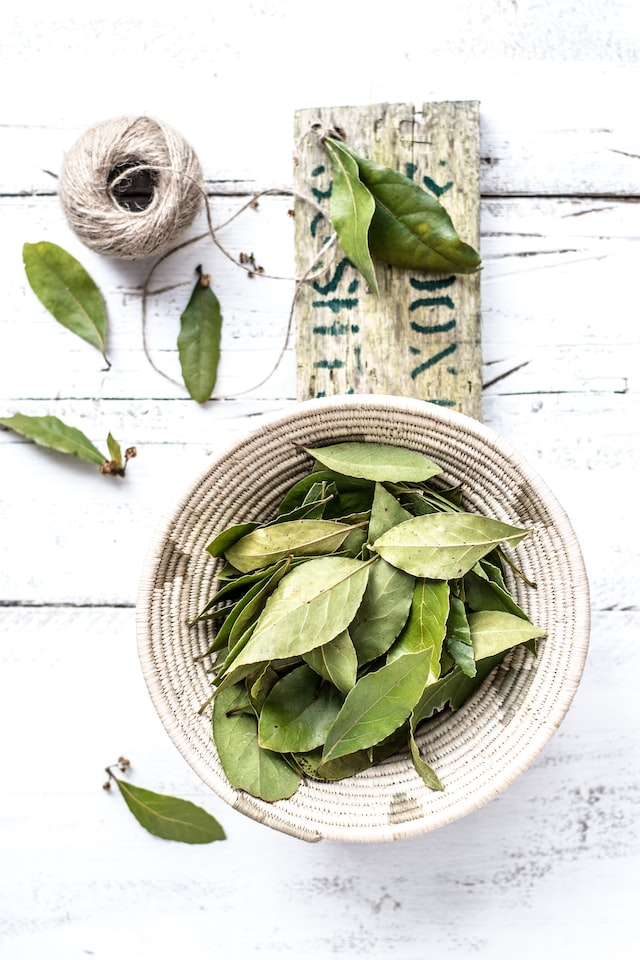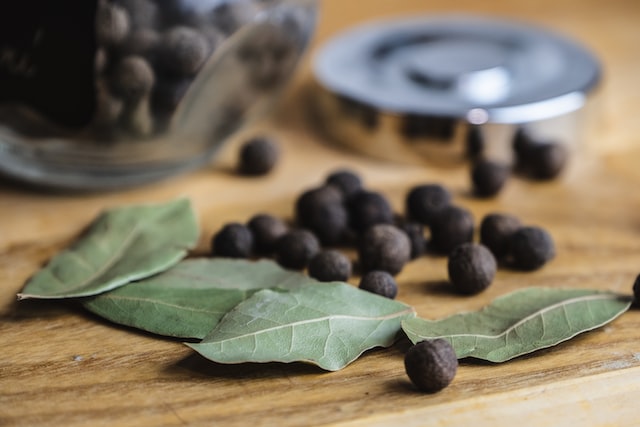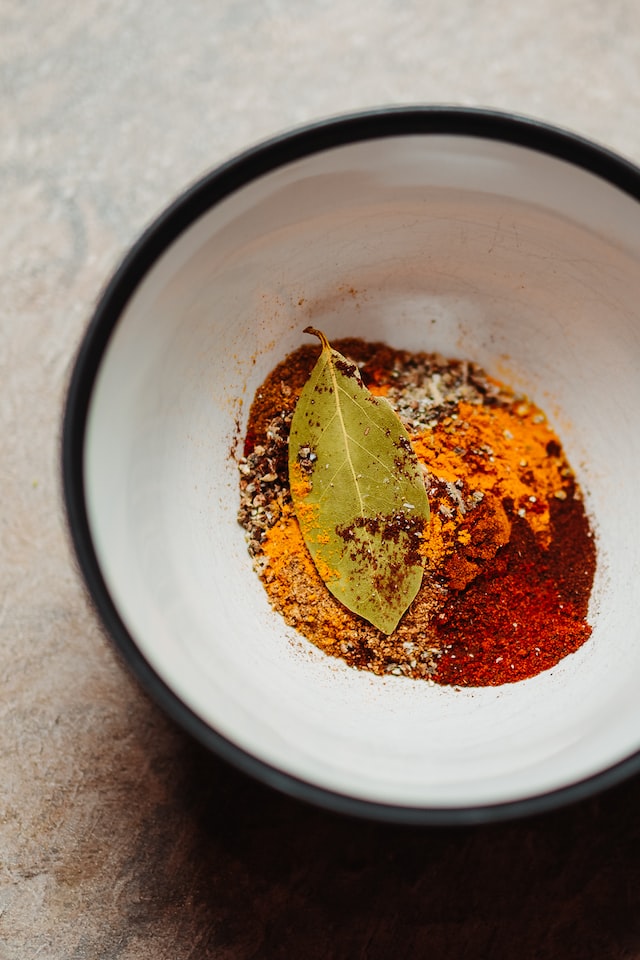Experience the Strength of Bay Leaf Fragrance
The Enigmatic Bay Leaf: A Fragrant Journey Through History and Beyond
The bay leaf, scientifically known as Laurus nobilis, is a fragrant and versatile herb that has left an indelible mark on human history. From being a popular culinary spice to a cherished fragrance in perfumes and therapeutic oils, the bay leaf has earned a special place in various cultures and traditions around the world. In this comprehensive article, we will explore the fascinating world of bay leaves, including their use in perfumery, therapeutic oils, culinary delights, medicinal systems, historical significance, and intriguing fun facts that make them a beloved herb with a captivating aroma.
I. Introduction to Bay Leaf:
The bay leaf is an evergreen shrub or small tree that belongs to the Lauraceae family. It is native to the Mediterranean region and is characterized by its glossy, dark green leaves with a prominent midrib. The leaves, known as bay leaves, are highly aromatic and possess a distinct flavor profile that is both herbal and slightly floral.
II. Fragrance in Perfumes:
Bay leaves have a unique fragrance that has caught the attention of perfumers for centuries. The aromatic scent of bay leaves is often described as warm, woody, and slightly spicy, with subtle hints of eucalyptus and clove. Perfumers use bay leaf essential oil as a top or middle note in their creations to add depth and complexity to the fragrance.
III. Therapeutic Oils:
Bay leaf essential oil, extracted from the leaves of the bay laurel plant, is renowned for its therapeutic properties. The oil contains active compounds such as eucalyptol, cineol, and linalool, which contribute to its potential health benefits.
In aromatherapy, bay leaf essential oil is used to promote relaxation, reduce stress, and alleviate mental fatigue. Its warm and comforting aroma is believed to soothe the mind and create a sense of tranquility.
IV. Culinary Delights:
Bay leaves are an essential ingredient in various cuisines, imparting their distinctive aroma and flavor to a wide range of dishes. Commonly used in soups, stews, and sauces, bay leaves add depth and complexity to the flavors of the food.
The bay leaf is a key component of the classic French bouquet garni, a bundle of herbs used to infuse flavors in dishes such as stocks and braises. It is also a crucial element in the Indian spice blend known as garam masala, adding a warm and aromatic touch to curries and rice dishes.
V. Medicinal Uses:
Bay leaves have been utilized for their medicinal properties for centuries. In traditional medicine, bay leaf tea is believed to aid digestion, soothe respiratory issues, and promote overall well-being. The leaves are rich in essential oils and antioxidants, contributing to their potential health benefits.
VI. Historical Significance:
The bay leaf has a long history dating back to ancient civilizations. In Greek and Roman cultures, the bay leaf was considered a symbol of victory, honor, and wisdom. Emperors and military leaders were crowned with laurel wreaths made from bay leaves as a mark of distinction and accomplishment.
The ancient Greeks believed that the nymph Daphne was transformed into a laurel tree, giving rise to the association between the bay leaf and the Greek god Apollo.
VII. Fun Crazy Facts:
The bay leaf's captivating aroma and versatility have made it a cherished herb with a rich history and a wide range of uses. From perfumes to therapeutic oils, from culinary delights to medicinal practices, the bay leaf continues to enchant and inspire. Its place in ancient mythology and cultural traditions adds to its allure, making it an esteemed symbol of victory and wisdom. As we continue to explore and appreciate the world of bay leaves, their warm and fragrant journey through history and beyond remains an enduring source of fascination and wonder.
The bay leaf, scientifically known as Laurus nobilis, is a fragrant and versatile herb that has left an indelible mark on human history. From being a popular culinary spice to a cherished fragrance in perfumes and therapeutic oils, the bay leaf has earned a special place in various cultures and traditions around the world. In this comprehensive article, we will explore the fascinating world of bay leaves, including their use in perfumery, therapeutic oils, culinary delights, medicinal systems, historical significance, and intriguing fun facts that make them a beloved herb with a captivating aroma.
I. Introduction to Bay Leaf:
The bay leaf is an evergreen shrub or small tree that belongs to the Lauraceae family. It is native to the Mediterranean region and is characterized by its glossy, dark green leaves with a prominent midrib. The leaves, known as bay leaves, are highly aromatic and possess a distinct flavor profile that is both herbal and slightly floral.
II. Fragrance in Perfumes:
Bay leaves have a unique fragrance that has caught the attention of perfumers for centuries. The aromatic scent of bay leaves is often described as warm, woody, and slightly spicy, with subtle hints of eucalyptus and clove. Perfumers use bay leaf essential oil as a top or middle note in their creations to add depth and complexity to the fragrance.
III. Therapeutic Oils:
Bay leaf essential oil, extracted from the leaves of the bay laurel plant, is renowned for its therapeutic properties. The oil contains active compounds such as eucalyptol, cineol, and linalool, which contribute to its potential health benefits.
In aromatherapy, bay leaf essential oil is used to promote relaxation, reduce stress, and alleviate mental fatigue. Its warm and comforting aroma is believed to soothe the mind and create a sense of tranquility.
IV. Culinary Delights:
Bay leaves are an essential ingredient in various cuisines, imparting their distinctive aroma and flavor to a wide range of dishes. Commonly used in soups, stews, and sauces, bay leaves add depth and complexity to the flavors of the food.
The bay leaf is a key component of the classic French bouquet garni, a bundle of herbs used to infuse flavors in dishes such as stocks and braises. It is also a crucial element in the Indian spice blend known as garam masala, adding a warm and aromatic touch to curries and rice dishes.
V. Medicinal Uses:
Bay leaves have been utilized for their medicinal properties for centuries. In traditional medicine, bay leaf tea is believed to aid digestion, soothe respiratory issues, and promote overall well-being. The leaves are rich in essential oils and antioxidants, contributing to their potential health benefits.
VI. Historical Significance:
The bay leaf has a long history dating back to ancient civilizations. In Greek and Roman cultures, the bay leaf was considered a symbol of victory, honor, and wisdom. Emperors and military leaders were crowned with laurel wreaths made from bay leaves as a mark of distinction and accomplishment.
The ancient Greeks believed that the nymph Daphne was transformed into a laurel tree, giving rise to the association between the bay leaf and the Greek god Apollo.
VII. Fun Crazy Facts:
- In ancient times, bay leaves were believed to have mystical powers and were used in divination and fortune-telling rituals.
- The term "baccalaureate" comes from the Latin "baccalaureus," meaning "laurel berry," and refers to the traditional practice of crowning scholars with a laurel wreath during graduation ceremonies.
- In some cultures, bay leaves are placed inside kitchen cabinets to deter insects and pests.
- Bay leaves are toxic when consumed in large quantities and should be removed from the dish before serving.
The bay leaf's captivating aroma and versatility have made it a cherished herb with a rich history and a wide range of uses. From perfumes to therapeutic oils, from culinary delights to medicinal practices, the bay leaf continues to enchant and inspire. Its place in ancient mythology and cultural traditions adds to its allure, making it an esteemed symbol of victory and wisdom. As we continue to explore and appreciate the world of bay leaves, their warm and fragrant journey through history and beyond remains an enduring source of fascination and wonder.
To experience augmented reality, please open the Facebook-app using QR code and point to the image below
Unveiling the Intense Aroma of Bay Leaf
Bay leaves are dried leaves from the bay laurel tree. They are used as an aromatic ingredient in cooking, and are often used to add flavor to soups, stews, and braises. Bay leaves are typically added to dishes in a whole form, and are removed before the dish is served, as they can be tough and bitter if ingested.
Bay leaves are believed to have a number of potential health benefits, including:
Bay leaves are believed to have a number of potential health benefits, including:
- Anti-inflammatory properties: Bay leaves may have anti-inflammatory properties, which may make them useful in the treatment of conditions such as arthritis and asthma.
- Antioxidant effects: Bay leaves are a rich source of antioxidants, which can help to protect cells from damage caused by free radicals.
- May improve heart health: Some studies suggest that bay leaves may have a protective effect on the heart, potentially reducing the risk of heart disease.
- May have antibacterial properties: Bay leaves may have antibacterial properties, making them useful for fighting off infections.
- May have anti-cancer properties: Some research suggests that bay leaves may have anti-cancer properties, although more research is needed to confirm this.
Crafting Masculine Identity through Fragrance
The bay laurel tree has a long history of use in cooking and traditional medicine, and bay leaves have been used for thousands of years as an aromatic ingredient in a variety of dishes.
In ancient Greek and Roman cultures, bay leaves were used to crown victors in sporting events and to make wreaths for the gods. The ancient Greeks and Romans also used bay leaves in cooking and in traditional medicine, believing that they had medicinal properties.
Bay leaves have also played a role in literature and art throughout history. In Greek mythology, the bay laurel tree was associated with Apollo, the god of poetry and music, and was believed to bring good luck. In literature, bay leaves have been mentioned by writers such as Shakespeare and Milton.
In modern times, bay leaves are used as an aromatic ingredient in a variety of dishes in cuisines around the world, including soups, stews, and braises. They are also used in traditional medicine in some cultures, although the medicinal properties of bay leaves have not been extensively studied.
In ancient Greek and Roman cultures, bay leaves were used to crown victors in sporting events and to make wreaths for the gods. The ancient Greeks and Romans also used bay leaves in cooking and in traditional medicine, believing that they had medicinal properties.
Bay leaves have also played a role in literature and art throughout history. In Greek mythology, the bay laurel tree was associated with Apollo, the god of poetry and music, and was believed to bring good luck. In literature, bay leaves have been mentioned by writers such as Shakespeare and Milton.
In modern times, bay leaves are used as an aromatic ingredient in a variety of dishes in cuisines around the world, including soups, stews, and braises. They are also used in traditional medicine in some cultures, although the medicinal properties of bay leaves have not been extensively studied.
Bay Leaf Scent: Where Strength Meets Aroma
There are many myths and legends surrounding the bay laurel tree and its leaves.
In ancient Greek and Roman cultures, the bay laurel tree was associated with Apollo, the god of poetry and music, and was believed to bring good luck. In Greek mythology, the bay laurel tree was also associated with the god Dionysus, and it was believed to have mystical powers.
In some cultures, bay leaves are believed to have medicinal properties and are used to treat a variety of ailments. For example, bay leaves are thought to have anti-inflammatory properties and are sometimes used to treat conditions such as arthritis and asthma. However, it is important to note that the medicinal properties of bay leaves have not been extensively studied and more research is needed to confirm any potential health benefits.
There are many other myths and legends surrounding bay leaves, including the belief that they can protect against evil spirits and bring prosperity and happiness. While these myths may have some cultural significance, it is important to approach them with caution and to base any decisions about the use of bay leaves on scientific evidence rather than folklore.
In ancient Greek and Roman cultures, the bay laurel tree was associated with Apollo, the god of poetry and music, and was believed to bring good luck. In Greek mythology, the bay laurel tree was also associated with the god Dionysus, and it was believed to have mystical powers.
In some cultures, bay leaves are believed to have medicinal properties and are used to treat a variety of ailments. For example, bay leaves are thought to have anti-inflammatory properties and are sometimes used to treat conditions such as arthritis and asthma. However, it is important to note that the medicinal properties of bay leaves have not been extensively studied and more research is needed to confirm any potential health benefits.
There are many other myths and legends surrounding bay leaves, including the belief that they can protect against evil spirits and bring prosperity and happiness. While these myths may have some cultural significance, it is important to approach them with caution and to base any decisions about the use of bay leaves on scientific evidence rather than folklore.
Rediscover Boldness with Bay Leaf Fragrance
Bay leaves have a strong, aromatic scent that is slightly sweet and slightly bitter. The scent of bay leaves is often described as woody and earthy, with hints of pine and eucalyptus.
The scent of bay leaves is caused by the essential oils that are found in the leaves of the plant. These oils contain a variety of compounds, including cineole, which gives bay leaves their woody and eucalyptus-like aroma, and eugenol, which gives bay leaves their slightly sweet and spicy scent.
The scent of bay leaves is often used to add depth and complexity to a variety of dishes, including soups, stews, and braises. It is also used in a variety of other products, including perfumes and candles, due to its pleasant and aromatic scent.
The scent of bay leaves is caused by the essential oils that are found in the leaves of the plant. These oils contain a variety of compounds, including cineole, which gives bay leaves their woody and eucalyptus-like aroma, and eugenol, which gives bay leaves their slightly sweet and spicy scent.
The scent of bay leaves is often used to add depth and complexity to a variety of dishes, including soups, stews, and braises. It is also used in a variety of other products, including perfumes and candles, due to its pleasant and aromatic scent.
Elevate Your Presence with Bay Leaf Aromas
In ancient Greek and Roman cultures, bay leaves were used to crown victors in sporting events and to make wreaths for the gods. The ancient Greeks and Romans also used bay leaves in cooking and in traditional medicine, believing that they had medicinal properties.
Bay leaves have also played a role in literature and art throughout history. In Greek mythology, the bay laurel tree was associated with Apollo, the god of poetry and music, and was believed to bring good luck. In literature, bay leaves have been mentioned by writers such as Shakespeare and Milton.
In modern times, bay leaves are used as an aromatic ingredient in a variety of dishes in cuisines around the world, including soups, stews, and braises. They are also used in traditional medicine in some cultures, although the medicinal properties of bay leaves have not been extensively studied.
Bay leaves have also played a role in literature and art throughout history. In Greek mythology, the bay laurel tree was associated with Apollo, the god of poetry and music, and was believed to bring good luck. In literature, bay leaves have been mentioned by writers such as Shakespeare and Milton.
In modern times, bay leaves are used as an aromatic ingredient in a variety of dishes in cuisines around the world, including soups, stews, and braises. They are also used in traditional medicine in some cultures, although the medicinal properties of bay leaves have not been extensively studied.
Join Scentopia, Sentosa's latest tourist attraction wonderful orchid scent crafting, fragrance tour, bridal shower or corporate team building which includes perfume making onsite and offsite, beach activities and more. We also serve primary school learning journey, secondary students and pupil on industrial excursions. Know more about our orchids perfume bar or therapeutic orchid scents and other wellness aromas. Conatct Perfume workshop or book a scent crafting session here.





